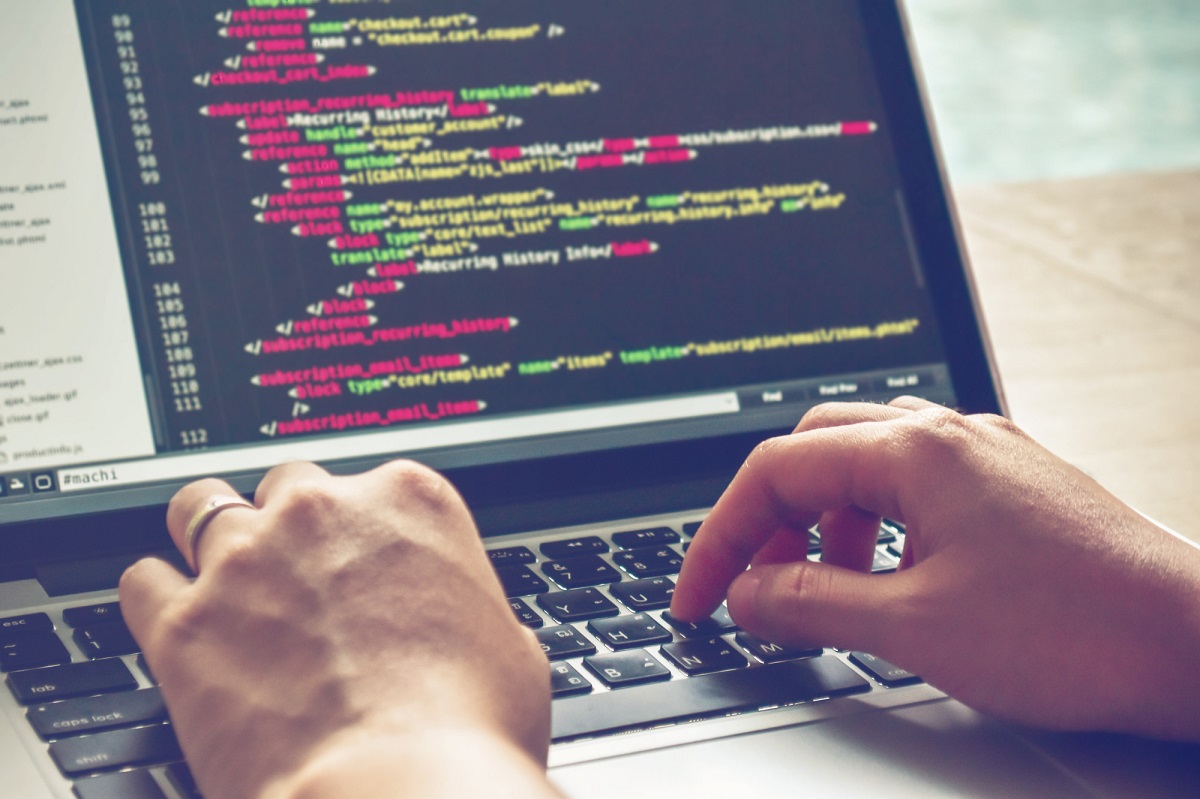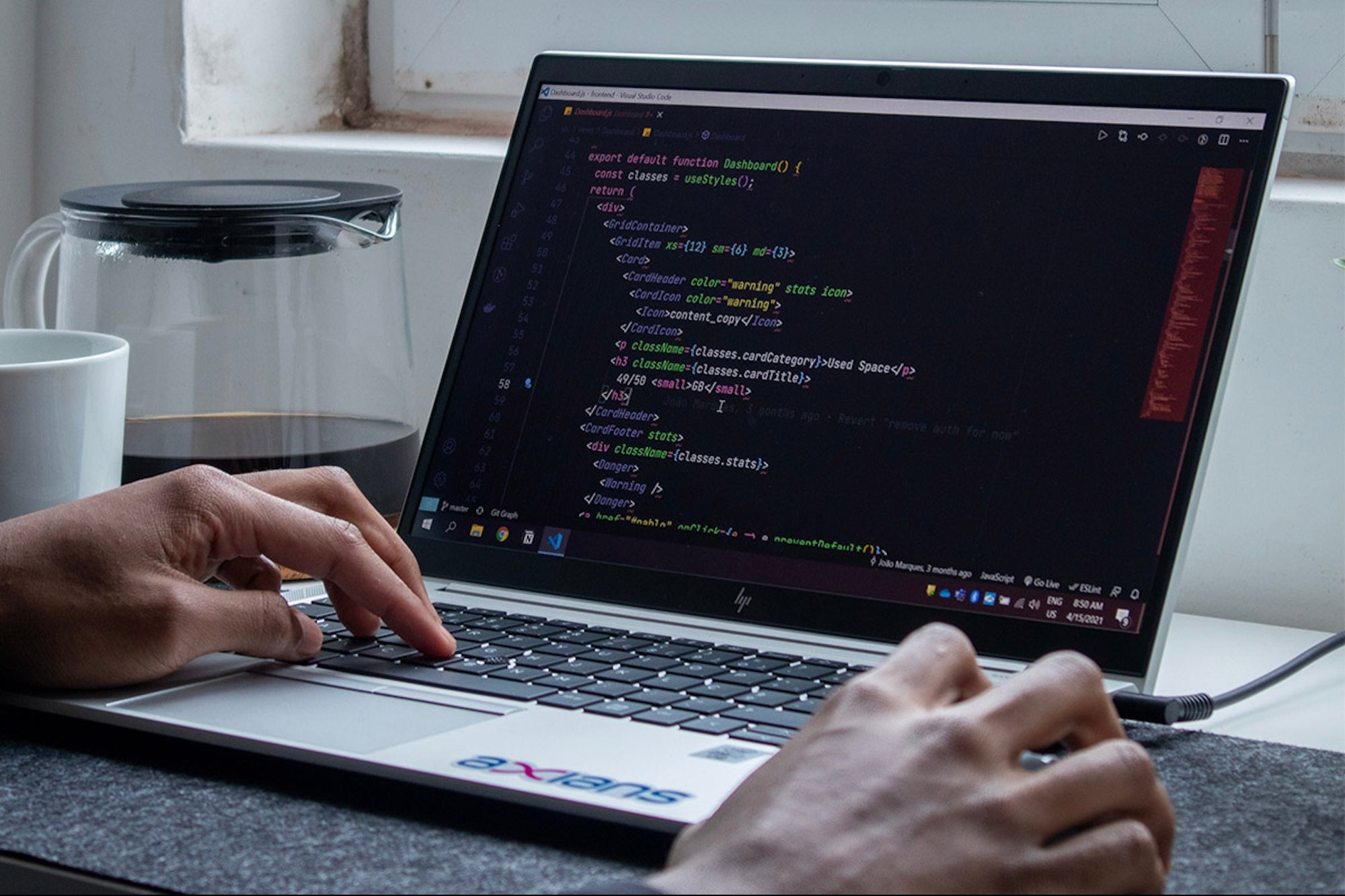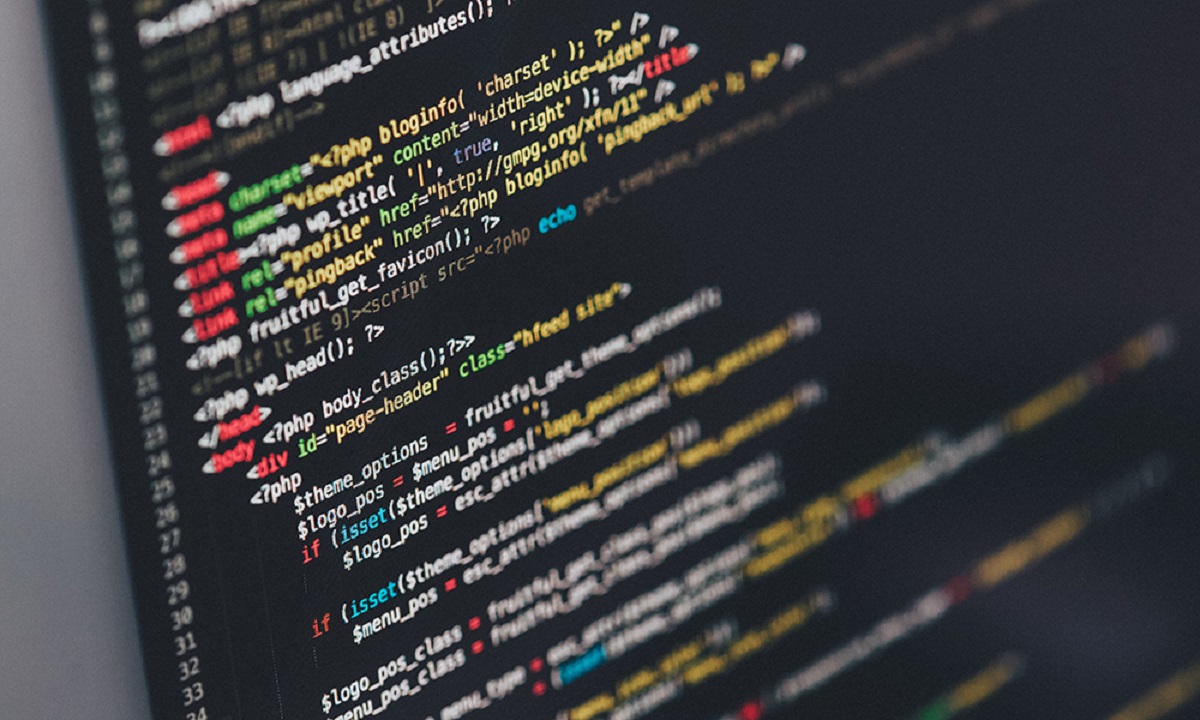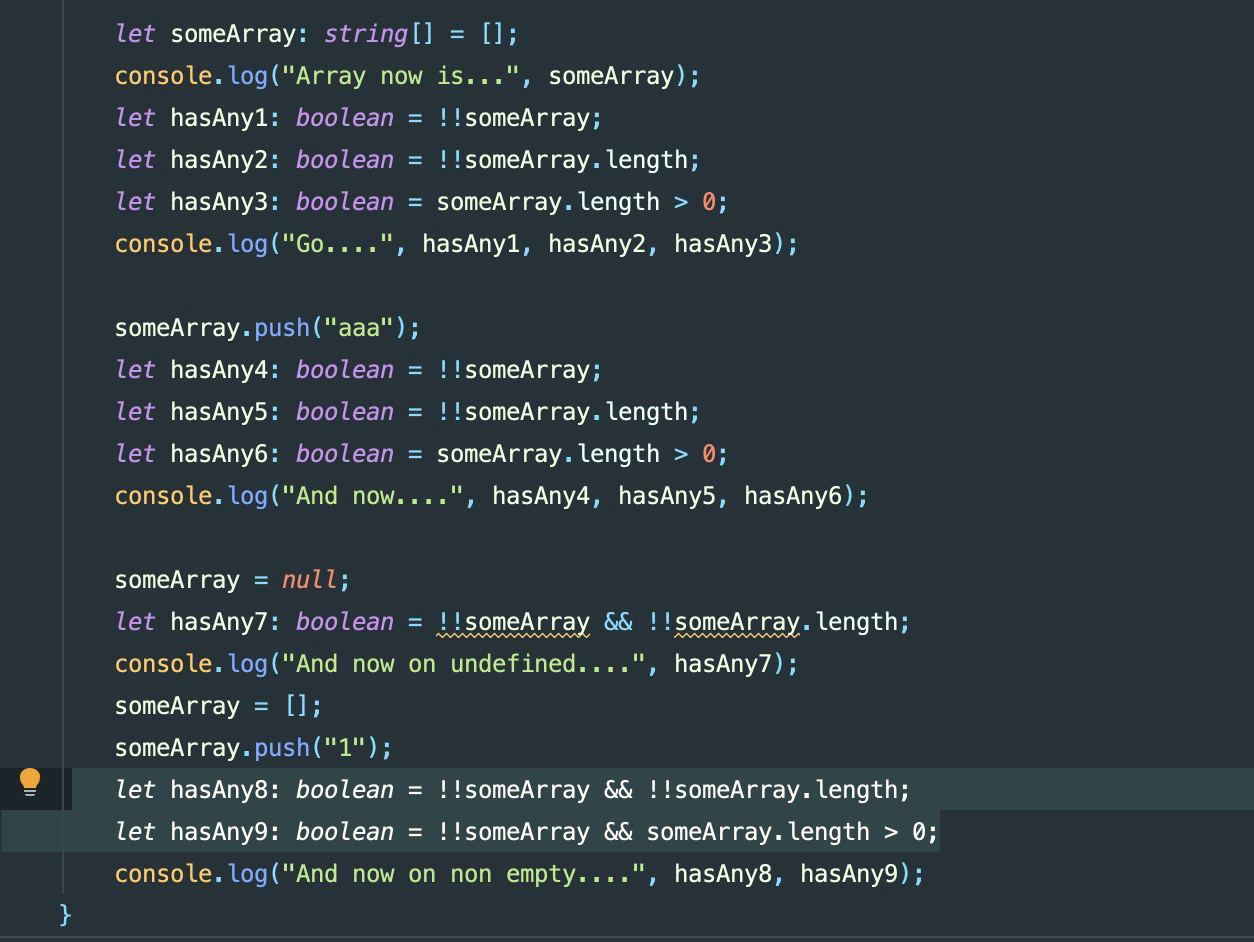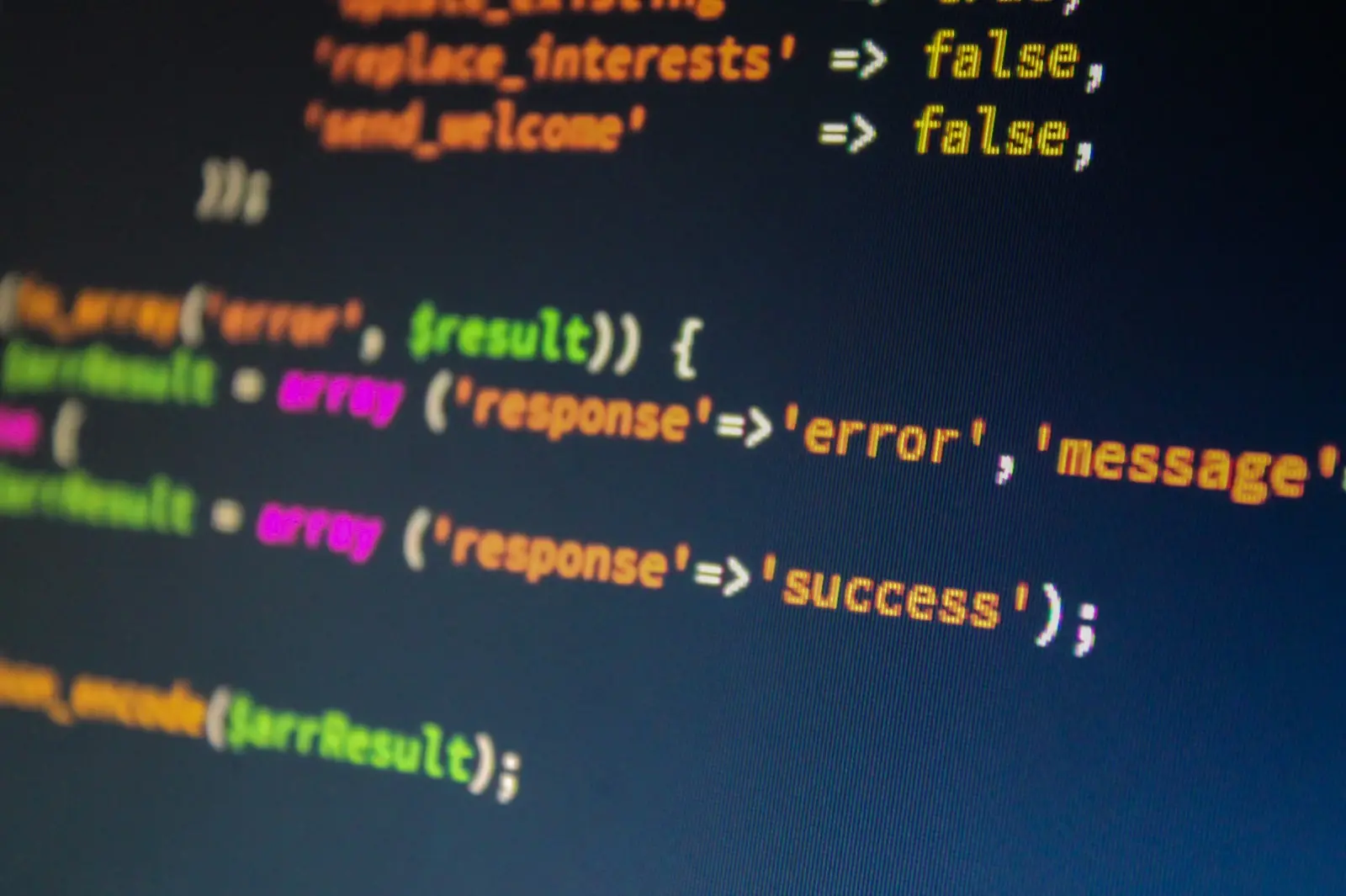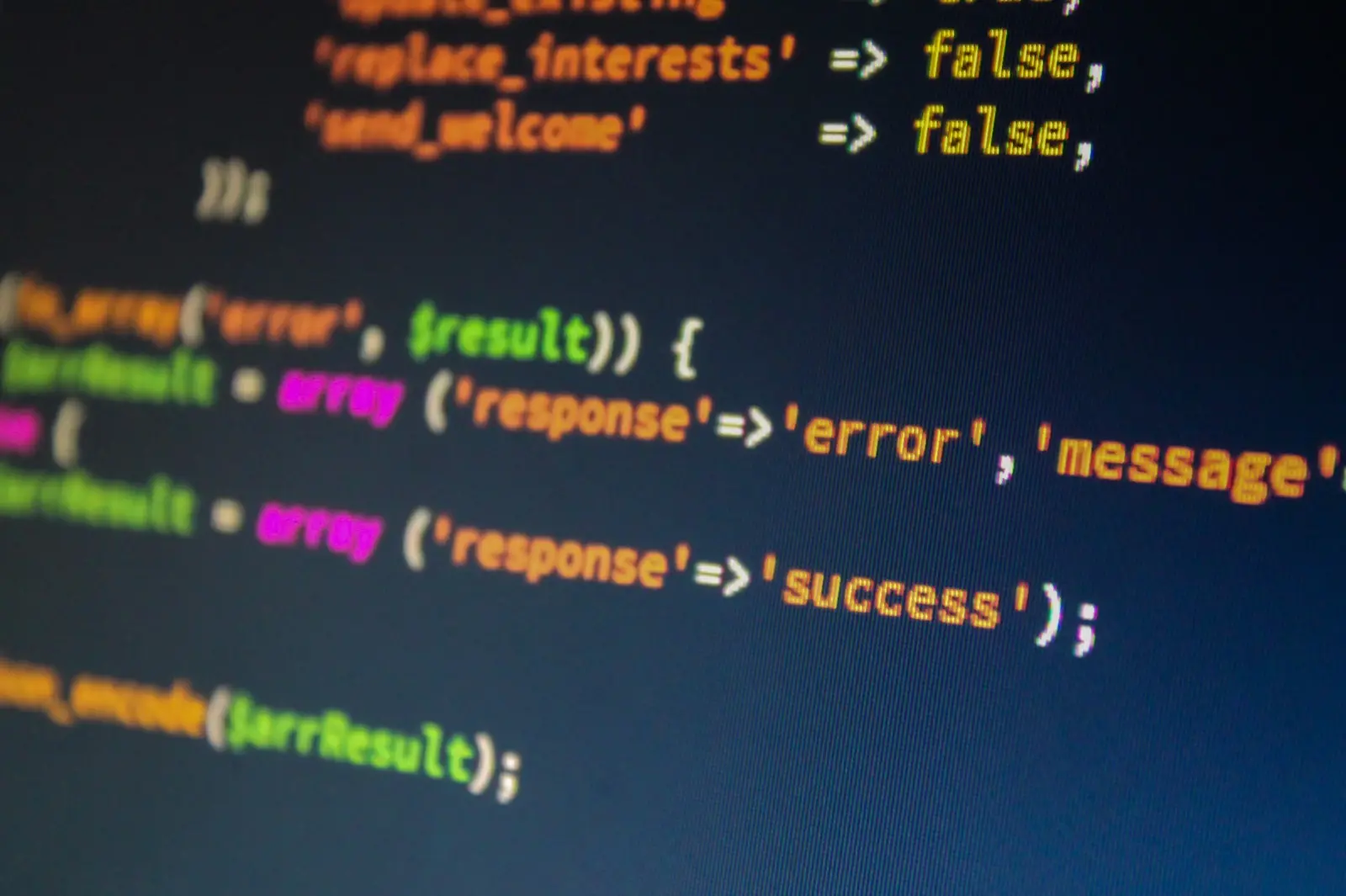Introduction
The PHP programming language is an integral part of web development, offering a powerful and versatile platform for creating dynamic and interactive websites. PHP, which stands for Hypertext Preprocessor, is a server-side scripting language that is widely used across the web to enhance the functionality and interactivity of web pages.
Originally designed as a set of tools for managing personal home pages, PHP quickly evolved into a robust language capable of handling complex web applications. With its ability to generate dynamic content, interact with databases, handle form submissions, and communicate with other web services, PHP has become one of the most popular languages for web development.
One of the key advantages of PHP is its simplicity and ease of use. The syntax is relatively straightforward, making it accessible for beginners to learn and understand. Additionally, PHP offers a wide range of built-in functions and libraries, allowing developers to perform a variety of tasks with minimal effort.
Another distinguishing feature of PHP is its compatibility with different operating systems and web servers. Whether you’re running a website on a Linux, Windows, or macOS server, PHP can be seamlessly integrated to deliver dynamic content and enhance the user experience.
In recent years, PHP has undergone significant updates and improvements. The latest version, PHP 8, introduced numerous features and performance enhancements, including improvements in error handling, typing, and the addition of new functions and classes.
With its flexibility, ease of use, and continuous evolution, PHP remains a top choice for web development. In the following sections, we will explore various aspects of PHP, including variables, data types, operators, control structures, functions, arrays, classes and objects, exception handling, file handling, database connectivity, regular expressions, error handling, debugging, security measures, and best practices.
Variables
In PHP, variables are used to store and manipulate data. They act as containers that hold values, and these values can be changed as the program runs. Variables in PHP are dynamic and can store different types of data, such as strings, numbers, booleans, arrays, and objects.
To declare a variable in PHP, you use the dollar sign ($) followed by the variable name. The variable name should start with a letter or an underscore, and it can contain letters, numbers, and underscores.
For example, to declare a variable called “message” and assign it the value “Hello, world!”, you can write:
php
$message = “Hello, world!”;
Once a variable is declared, you can use it throughout your code. You can also change its value by assigning a new value to it. For example, if you want to change the value of the “message” variable to “Welcome!”, you can do:
php
$message = “Welcome!”;
PHP is a loosely typed language, which means you don’t need to explicitly declare the type of a variable. The type will be determined automatically based on the value assigned to it. This flexibility allows you to easily switch between different data types without any restrictions.
Another important aspect of variables in PHP is variable scope. The scope of a variable determines where it can be accessed in your code. PHP has different types of variable scopes, including global, local, static, and superglobal.
Global variables are accessible throughout the entire code, including inside functions and classes. Local variables, on the other hand, are only accessible within the block of code where they are declared. Static variables retain their values across multiple function calls, and superglobal variables are predefined variables that are accessible from any part of the PHP script.
Using variables effectively can greatly enhance the flexibility and functionality of your PHP code. By storing and manipulating data in variables, you can create dynamic and interactive applications with ease.
Data Types
In PHP, data types are used to define the type of data that can be stored in a variable. PHP supports several built-in data types, each serving a specific purpose and allowing for the manipulation of different kinds of data.
Some of the commonly used data types in PHP include:
- String: A sequence of characters enclosed in single or double quotes. Strings can be manipulated using a variety of built-in functions and operators.
- Integer: A whole number that can be either positive or negative. Integers are used for numeric calculations and comparisons.
- Float: Also known as double or floating-point numbers, they are used for representing decimal numbers with a fractional component.
- Boolean: A data type that can have two values: true or false. Booleans are often used for conditional statements and logical operations.
- Array: A collection of values that can be stored and accessed using a single variable. Arrays can be indexed numerically or with strings, allowing for the organization and manipulation of related data.
- Object: An instance of a class that encapsulates data and behavior. Objects allow for the creation of complex data structures and facilitate the concept of object-oriented programming.
- Null: A special data type that represents the absence of a value. It is often used to indicate that a variable has not been assigned a value yet.
Additionally, PHP supports compound data types such as:
- Resource: A reference to an external resource, such as a file, database connection, or network socket.
It is worth noting that PHP is a dynamically-typed language, meaning you do not need to explicitly declare the data type of a variable. PHP automatically assigns the appropriate data type based on the value assigned to the variable.
Understanding and working with different data types is crucial for writing efficient and error-free PHP code. By selecting the appropriate data type and utilizing the available functions and operators, you can effectively manipulate and process data in your PHP applications.
Operators
In PHP, operators are used to perform various operations on data, such as mathematical calculations, string concatenation, logical comparisons, and more. They allow you to manipulate and manipulate values in your PHP code.
PHP supports a wide range of operators, including:
- Arithmetic Operators: These operators are used for basic mathematical calculations, such as addition (+), subtraction (-), multiplication (*), division (/), and modulus (%).
- Assignment Operators: These operators are used to assign values to variables, such as the equal sign (=), which assigns the value on the right to the variable on the left.
- Comparison Operators: These operators are used to compare two values and determine their relationship, such as equal to (==), not equal to (!=), greater than (>), less than (<), and more.
- Logical Operators: These operators are used for logical comparisons and allow you to combine multiple conditions, such as AND (&&), OR (||), and NOT (!).
- String Operators: These operators are used to concatenate strings, such as the dot (.) operator, which combines two strings into a single string.
- Increment/Decrement Operators: These operators are used to increment or decrement the value of a variable, such as the increment (++) and decrement (–) operators.
- Array Operators: These operators are used to manipulate arrays, such as the union (+) operator, which combines two arrays into a single array.
- Ternary Operators: The ternary operator (?:) is a shorthand for if-else statements and allows you to assign a value to a variable based on a condition.
Understanding and utilizing operators effectively is essential for performing calculations, making comparisons, and controlling the flow of your PHP code. They allow you to handle complex logic and perform various operations with ease.
Control Structures
In PHP, control structures are used to control the flow of execution in a program. They allow you to make decisions, repeat code blocks, and execute different sections of code based on certain conditions. Control structures play a crucial role in building conditional statements and loops to create dynamic and interactive applications.
PHP supports several control structures, including:
- If Statement: The if statement allows you to execute a block of code if a certain condition is true. It can also be accompanied by else and elseif statements to handle alternative conditions.
- Switch Statement: The switch statement is used to perform different actions based on the value of a variable. It provides a concise way to handle multiple possible scenarios.
- While Loop: The while loop executes a block of code repeatedly as long as a specified condition is true. It is often used when the number of iterations is unknown or depends on a specific condition.
- Do-While Loop: Similar to the while loop, the do-while loop executes a block of code at least once before checking if the condition is true. It ensures that the code block is executed at least once.
- For Loop: The for loop iterates over a specific number of times and executes a block of code each time. It is commonly used when the number of iterations is known in advance.
- Foreach Loop: The foreach loop is used to iterate over the elements of an array or an object. It allows you to access and manipulate each element without explicitly using an index variable.
- Break and Continue Statements: The break statement is used to exit a loop prematurely, while the continue statement is used to skip the remaining code inside a loop and move to the next iteration.
By using control structures effectively, you can create complex and dynamic code paths, handle different conditions, and iterate over arrays and objects. They provide flexibility and control over the execution of your PHP code.
Functions
In PHP, functions are blocks of reusable code that perform specific tasks. They allow you to break down your code into smaller, modular chunks, making it easier to organize, debug, and maintain. Functions also promote code reusability and improve the overall efficiency of your PHP programs.
To create a function in PHP, you use the function keyword, followed by the function name, a set of parentheses, and a block of code enclosed in curly braces. Functions can optionally accept parameters, which are variables used to pass values into the function.
Here’s an example of a simple function:
php
function greet($name) {
echo “Hello, $name!”;
}
In the example above, the function greet takes a parameter $name and prints a personalized greeting. You can call this function by passing in an argument as follows:
php
greet(“John”);
This will output “Hello, John!”.
Functions can also return values using the return keyword. The returned value can then be stored in a variable or used directly in your code.
Here’s an example of a function that calculates the sum of two numbers and returns the result:
php
function sum($a, $b) {
return $a + $b;
}
You can call this function and use the returned value as follows:
php
$result = sum(5, 3);
echo $result; // Output: 8
PHP also supports built-in functions that perform various tasks, such as manipulating strings, working with arrays, performing mathematical calculations, and interacting with databases. These functions are pre-defined in PHP and can be used directly in your code without the need for additional setup or configuration.
By using functions effectively, you can organize your code, improve code reusability, and modularize complex tasks. Functions are a fundamental building block of PHP programming and essential for writing clean and efficient code.
Arrays
In PHP, arrays are versatile data structures used to store and manipulate multiple values in a single variable. Arrays provide a convenient way to organize and access related data elements, making them invaluable for handling collections of data in PHP.
To create an array in PHP, you use square brackets and separate each value with a comma. You can assign keys to the array elements to access them by a specific identifier. PHP supports several types of arrays:
- Numeric Arrays: Numeric arrays are indexed by numbers and are the most common type of array in PHP. The index starts from 0 for the first element and increments by 1 for each subsequent element.
- Associative Arrays: Associative arrays have string keys assigned to each element. Instead of using numeric indexes, you can access the elements of an associative array using the specified keys.
- Multi-dimensional Arrays: Multi-dimensional arrays are arrays within arrays. They allow you to store complex data structures and create hierarchies of values. For example, you can have an array of arrays for a record of students, each with multiple data elements like name, age, and grade.
Here’s an example of creating and using an array in PHP:
php
$fruits = array(“apple”, “banana”, “orange”);
echo $fruits[0]; // Output: apple
You can also create an associative array:
php
$student = array(
“name” => “John”,
“age” => 20,
“grade” => “A”
);
echo $student[“name”]; // Output: John
In addition to creating arrays manually, PHP provides a variety of built-in functions to manipulate and access array elements. These functions include sorting arrays, merging arrays, filtering arrays, adding or removing elements, and more.
Arrays are essential for handling collections of data, such as lists, sets, or key-value mappings. By using arrays effectively, you can organize and process complex data structures, iterate over elements, and perform various operations on arrays efficiently.
Classes and Objects
In PHP, classes and objects are fundamental concepts of object-oriented programming (OOP). They provide a way to encapsulate data and related functionality into reusable structures, allowing for modular and organized code.
A class is a blueprint or template for creating objects. It defines the properties (attributes) and behaviors (methods) that an object of that class can have. The properties represent the data or state of the object, while the methods define the actions or operations that can be performed on the object.
To create a class in PHP, you use the class keyword, followed by the class name and a block of code enclosed in curly braces.
Here’s an example of a simple class in PHP:
php
class Car {
// Properties
public $brand;
public $color;
// Methods
public function start() {
echo “The $this->color $this->brand is starting.”;
}
public function accelerate() {
echo “The $this->brand is accelerating.”;
}
}
Once a class is defined, you can create objects (instances) of that class using the new keyword. Each object is independent and has its own set of properties and can invoke methods defined in the class.
Here’s an example of creating an object from the above Car class:
php
$myCar = new Car();
$myCar->brand = “Toyota”;
$myCar->color = “blue”;
$myCar->start(); // Output: The blue Toyota is starting.
In addition to properties and methods, classes can have constructors and destructors. The constructor is a special method that is automatically called when an object is created, allowing you to initialize the object’s properties. The destructor is called when an object is no longer referenced and is about to be destroyed.
Classes and objects provide a powerful mechanism to model real-world concepts in code. They promote code reusability, encapsulation, and maintainability. By utilizing classes and objects, you can create modular and organized code structures in your PHP applications.
Exception Handling
In PHP, exception handling is a mechanism that allows you to handle and recover from runtime errors or exceptional conditions that may occur during the execution of your code. Exceptions provide a structured way to deal with errors, making your code more robust and maintainable.
When an exception occurs in PHP, it generates an object of the built-in Exception class or one of its subclasses. This object contains information about the error, such as the type of exception, a message describing the error, and the line number where the exception occurred.
To handle exceptions in PHP, you use a combination of try, catch, and finally blocks.
The try block is used to enclose the code that may throw an exception. If an exception is thrown within the try block, the execution of the block is immediately stopped, and the control is transferred to the nearest matching catch block.
In the catch block, you can specify the type of exception you want to catch, using the catch keyword followed by the exception type and an optional variable name to store the exception object.
Here’s an example that demonstrates exception handling in PHP:
php
try {
// Code that may throw an exception
$result = 10 / 0; // Division by zero will throw an exception
}
catch (Exception $e) {
// Exception handling
echo “An error occurred: ” . $e->getMessage();
}
In the example above, if a division by zero occurs, an exception of type DivisionByZeroError is thrown. The catch block catches the exception and displays an error message.
The finally block is optional and is used to specify code that should always be executed, whether an exception is thrown or not. This block is typically used for cleanup tasks, such as closing database connections or releasing resources.
By using exception handling, you can gracefully handle errors and exceptions in your PHP code. It allows you to handle different exceptional scenarios, provide meaningful error messages, and perform specific actions based on the type of exception thrown.
File Handling
In PHP, file handling is the process of reading from and writing to files on the server. It provides a way to interact with external files, such as text files, CSV files, JSON files, and more. File handling allows you to create, open, read, write, and close files to perform various operations and manipulate data.
There are several functions and techniques available in PHP for file handling:
Opening and Closing Files: To work with files, you first need to open them using the fopen() function. It takes two parameters, the file name/path and the mode in which the file should be opened (read, write, append, etc.). Once you’re done with the file, you should close it using the fclose() function to free up system resources.
Reading from Files: PHP offers different functions to read from files, such as fread(), fgets(), and file_get_contents(). These functions allow you to read the contents of a file either in chunks or line by line.
Writing to Files: To write data to a file, you can use functions like fwrite() and file_put_contents(). They enable you to write content to a file, either by appending it to the existing data or by overwriting it entirely.
Manipulating File Pointers: PHP provides functions like fseek(), ftell(), and rewind() to manipulate the file pointer, which represents the current position within the file. These functions allow you to move the pointer to a specific location, retrieve the current position, or reset it to the beginning of the file.
Checking File Existence and Properties: You can use functions like file_exists() and filesize() to check if a file exists and determine its size, respectively. This information can be useful when working with files dynamically, allowing you to handle different scenarios based on the file’s state.
It is important to consider security precautions when performing file handling operations. It’s good practice to validate user input and sanitize file names to prevent possible security vulnerabilities like path traversal attacks.
File handling in PHP provides a powerful and flexible way to read, write, and manipulate files. It enables you to interact with external data sources, handle file uploads, process log files, and perform various file-related operations to accomplish your tasks efficiently and securely.
Database Connectivity
In PHP, database connectivity allows you to interact with databases, such as MySQL, SQLite, PostgreSQL, and more, to store, retrieve, update, and delete data. Connecting PHP with databases enables you to build dynamic web applications that store and manipulate data efficiently.
PHP provides several extensions and libraries to establish database connections and execute queries. The most commonly used extension is mysqli (MySQL Improved), which offers an object-oriented approach to interact with MySQL databases. Another popular extension is PDO (PHP Data Objects), which provides a consistent and flexible interface to connect to various database systems.
To establish a database connection in PHP, you need to provide the necessary connection parameters, such as the database host, username, password, and database name. Once the connection is established, you can execute SQL queries to interact with the database.
Here’s an example of connecting to a MySQL database using the mysqli extension:
php
$host = ‘localhost’;
$username = ‘root’;
$password = ‘password’;
$database = ‘my_database’;
// Create a connection
$conn = new mysqli($host, $username, $password, $database);
// Check if the connection is successful
if ($conn->connect_error) {
die(“Connection failed: ” . $conn->connect_error);
}
// Execute a query
$sql = “SELECT * FROM users”;
$result = $conn->query($sql);
// Process the result
if ($result->num_rows > 0) {
while ($row = $result->fetch_assoc()) {
echo “Name: ” . $row[“name”] . ”
“;
}
} else {
echo “No results found.”;
}
// Close the connection
$conn->close();
It’s important to sanitize user input and use prepared statements or parameterized queries to prevent SQL injection attacks. These techniques ensure that user-supplied data is treated as data rather than executable code, protecting your database and application from malicious activity.
Database connectivity in PHP allows you to store and retrieve data efficiently, build dynamic web applications, and interact with databases seamlessly. By utilizing the appropriate database extension, following best practices, and leveraging the power of SQL, you can create robust and secure database-driven applications.
Regular Expressions
Regular expressions (regex) in PHP are powerful tools for pattern matching and manipulating text. They provide a concise and flexible way to search, extract, validate, and replace text based on specific patterns or rules.
A regular expression consists of a pattern or sequence of characters that define a search pattern. The pattern can include ordinary characters, special characters, and metacharacters that represent a range of characters or match specific criteria.
In PHP, regular expressions can be used with various functions such as preg_match(), preg_match_all(), preg_replace(), and more. These functions allow you to perform operations like matching, searching, and replacing text based on the defined pattern.
Here’s an example of using regular expressions in PHP:
php
$pattern = ‘/[0-9]+/’;
$string = ‘The price of the product is $1000.’;
// Search for a number in the string
preg_match($pattern, $string, $matches);
// Output the matched number
echo “Matched Number: ” . $matches[0]; // Output: Matched Number: 1000
In the example above, the regular expression pattern /[0-9]+/ matches one or more digits in the string. The preg_match() function finds the first match and stores it in the $matches array.
Regular expressions provide a powerful way to perform complex text manipulation. Some common use cases include:
- Validating user input, such as emails, phone numbers, or passwords.
- Searching and extracting specific information from text, like URLs, dates, or IP addresses.
- Replacing or formatting text based on a pattern, such as removing whitespace or formatting phone numbers.
However, regular expressions can be complex and require careful attention to ensure correct patterns and efficient matching. Understanding the syntax and common metacharacters is crucial for utilizing regular expressions effectively.
By mastering regular expressions in PHP, you can perform advanced text processing and manipulation tasks, making your code more efficient and versatile when working with textual data.
Error Handling and Debugging
Error handling and debugging are essential aspects of PHP development that help identify and resolve issues in your code. PHP provides various techniques and tools to handle errors, track bugs, and ensure smooth operation of your applications.
PHP offers built-in error handling mechanisms to catch and handle different types of errors, such as syntax errors, runtime errors, and logical errors. The error_reporting configuration directive allows you to define which types of errors should be reported, and the display_errors directive controls whether errors should be displayed to the user or logged for later review.
To handle errors gracefully, you can use the try-catch block and exception handling. Exceptions are a structured way to handle error conditions and control the flow of your code. By throwing exceptions in your code and catching them with appropriate catch blocks, you can handle errors conditionally and provide meaningful error messages to users.
Additionally, PHP provides functions like error_reporting(), trigger_error(), and set_error_handler() to customize error handling behavior, log errors, and define your error handling functions to handle specific error scenarios.
When it comes to debugging, PHP offers several tools and approaches:
- var_dump() and print_r(): These functions allow you to inspect and display the contents of variables, arrays, and objects, providing insights into data structures during the debugging process.
- debug_backtrace(): This function generates a backtrace of function calls, showing the sequence of function and method invocations leading up to the current point. It helps identify the origin of issues and trace the execution path.
- Error logging and log analysis: PHP provides the error_log() function to log errors, warnings, and notices to a specified file or system log. These logs can be analyzed to identify patterns, discover recurring issues, and investigate problematic areas.
- Debugging with IDEs and debugging extensions: Integrated Development Environments (IDEs), such as PhpStorm, and PHP debugging extensions, like Xdebug, enable advanced debugging features like breakpoints, step-by-step execution, variable inspections, and error highlighting, significantly simplifying the debugging process.
By effectively handling errors and employing debugging techniques, you can quickly identify and fix issues in your PHP code, ensuring the reliability and stability of your applications.
Security Measures
Implementing robust security measures is crucial in PHP development to protect your applications and user data from potential threats and vulnerabilities. By following best practices and adopting security measures, you can mitigate risks and ensure the integrity and confidentiality of your PHP applications.
Here are some important security measures to consider:
- Input Validation and Sanitization: Validate and sanitize user input to prevent potential attacks such as Cross-Site Scripting (XSS) or SQL Injection. Use functions like
filter_input()andhtmlspecialchars()to validate and sanitize user-supplied data. - Prepared Statements and Parameterized Queries: Use prepared statements or parameterized queries when interacting with databases to prevent SQL Injection attacks. These techniques separate SQL code from user input, ensuring that user-supplied data is treated as data and not executable code.
- Password Handling: Hash passwords using secure algorithms like bcrypt or Argon2 instead of storing them in plain text. Use functions like
password_hash()andpassword_verify()to handle password encryption and validation. - Secure Authentication: Implement secure authentication mechanisms, such as using secure session management, enforcing strong password policies, and utilizing multi-factor authentication (MFA) where applicable.
- Protection against Cross-Site Scripting (XSS): Implement output escaping using functions like
htmlspecialchars()to prevent XSS attacks. Escaping user-supplied data before outputting it to the browser helps to neutralize any potentially malicious code. - Secure File Handling: Validate and sanitize file inputs, restrict file upload types, and store uploaded files outside the webroot to prevent unauthorized access and execution of malicious files.
- Secure Configuration: Regularly update and patch your PHP version and associated libraries to address security vulnerabilities. Ensure that your server and PHP configurations are secure, disabling unnecessary extensions, and only enabling necessary functionality.
- Protection against Cross-Site Request Forgery (CSRF): Implement CSRF protection techniques, such as unique tokens, to prevent attackers from forcing users to perform unintended actions without their consent.
- Data Encryption: Use encryption algorithms to protect sensitive data, such as credit card information or personally identifiable information (PII), when storing or transmitting it.
- Secure Session Management: Implement secure session handling techniques, such as enabling secure session cookies, regenerating session IDs after important actions, and storing session data securely (e.g., in a database or encrypted form).
- Regular Security Audits and Testing: Conduct regular security audits and penetration testing to identify vulnerabilities and address them promptly. Use security scanning tools to identify potential weaknesses in your code or configuration.
Adopting these security measures, along with staying informed about the latest security practices and industry standards, will help safeguard your PHP applications, protect sensitive data, and maintain the trust of your users.
Best Practices
Following best practices in PHP development is essential for writing quality code, improving efficiency, and ensuring the maintainability and security of your applications. Adhering to established guidelines and industry standards can help you build robust and professional PHP projects.
Here are some important best practices to consider:
- Consistent and Readable Code: Write code that is easy to read, understand, and maintain. Use meaningful variable and function names, follow a consistent coding style, and apply proper indentation and formatting.
- Apply Object-Oriented Programming (OOP) Principles: Utilize the power of OOP to design modular and reusable code. Encapsulate data and behavior in classes, practice inheritance and polymorphism, and follow SOLID principles to achieve a clean and maintainable codebase.
- Modularize and Reuse Code: Break down your code into smaller functions or methods to promote code reusability and easier testing. Aim for code that is modular, with each function or class responsible for a single task.
- Use Version Control: Utilize a version control system, such as Git, to track changes, collaborate with teammates, and easily revert to previous versions if necessary.
- Document Your Code: Comment your code to explain its functionality, purpose, and any important considerations. Documenting your code helps future developers understand your intentions and facilitates maintenance and troubleshooting.
- Secure Coding Practices: Follow security measures, such as input validation, parameterized queries, and secure authentication, to protect against common vulnerabilities like XSS, SQL injection, and CSRF attacks.
- Error Handling and Logging: Implement proper error handling techniques and log errors for debugging and monitoring purposes. Maintain a comprehensive logging system to track potential issues and aid in troubleshooting.
- Optimize Performance: Optimize your code and database queries for better performance. Minimize unnecessary function calls, use efficient algorithms and data structures, and consider caching strategies to reduce server load.
- Testing and Quality Assurance: Adopt a testing mindset and write unit tests to ensure code reliability and catch potential bugs. Implement continuous integration and automated testing to maintain high code quality.
- Regular Updates and Security Patching: Keep your PHP version, libraries, frameworks, and dependencies up to date to leverage bug fixes, performance improvements, and security patches.
By following these best practices, you can build maintainable, secure, and efficient PHP applications. Emphasize code quality, adhere to industry standards, and continuously improve your coding skills to deliver exceptional PHP projects.
Conclusion
PHP is a versatile and powerful programming language that has become the backbone of countless websites and web applications. From variables and operators to classes and objects, PHP offers a wide range of features and functionalities that allow developers to build dynamic and interactive web applications.
Throughout this guide, we have explored various important aspects of PHP, such as variables, data types, control structures, functions, arrays, file handling, database connectivity, regular expressions, error handling, debugging, and security measures. By mastering these concepts and employing best practices, you can create efficient, secure, and maintainable PHP code.
While there is always more to learn and explore in the world of PHP, this guide has laid a strong foundation for understanding and leveraging the language’s capabilities. Whether you’re a beginner taking the first steps in web development or an experienced developer looking to polish your PHP skills, continuously improving your knowledge and staying informed about the latest developments in the PHP community is essential.
Remember that effective PHP development goes beyond just writing code. It involves adopting good coding practices, documenting your code, thoroughly testing your applications, and staying up to date with security measures and best practices. By doing so, you can ensure that your PHP projects are robust, efficient, and secure.
Embrace the power of PHP, continue to learn and explore, and leverage the vast resources available online to enhance your skills. As you delve deeper into PHP development, you will discover its immense potential in building dynamic, high-performance web applications that delight users and meet the demands of a rapidly evolving digital landscape.







